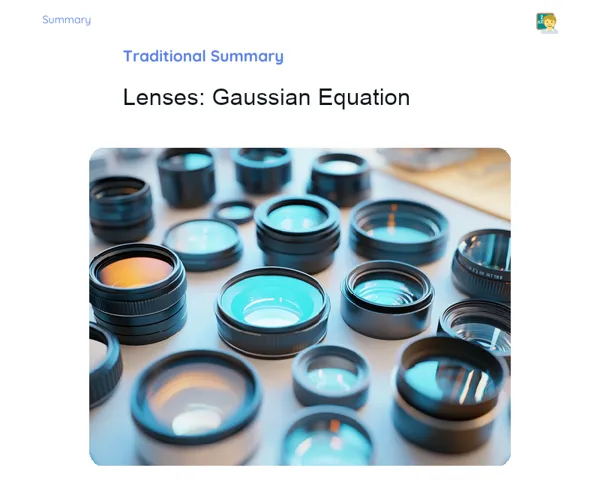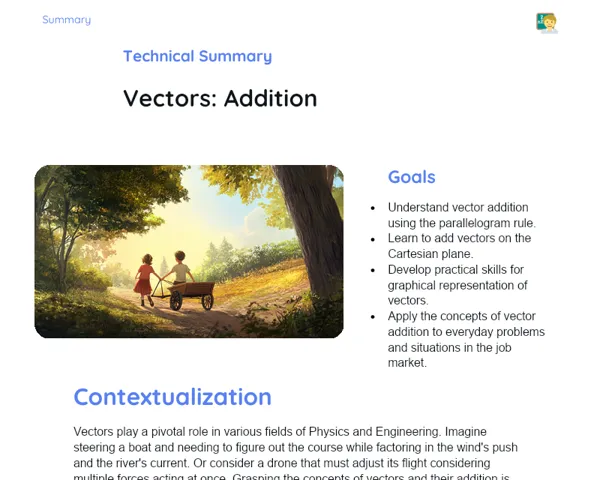Objectives
1. 🎯 Learn and apply the formula for centripetal acceleration (a = v²/r) in solving practical problems related to uniform circular motion.
2. 🔍 Sharpen your skills in analysing situations with circular motion by identifying key variables and understanding their relationships.
Contextualization
Did you know that centripetal acceleration is not just a topic in textbooks but also a key concept in everyday life? For instance, engineers designing rides at amusement parks—be it the thrilling roller coasters or the ever-popular carousels—rely on this principle to ensure safety. This idea helps us understand the forces at work around us and is fundamental in designing technologies that improve both our safety and enjoyment.
Important Topics
Centripetal Acceleration
Centripetal acceleration refers to how quickly the direction of an object's velocity changes as it moves along a circular path. Unlike tangential acceleration which affects speed, centripetal acceleration only alters the direction, continuously pointing towards the centre of the circle.
-
It plays an important role in everyday circular motions, such as those seen in carousels or a car taking a curve, ensuring smooth and predictable motion.
-
The formula to calculate it is a = v²/r, where v denotes the tangential speed and r is the radius of the circular path. In simpler terms, a smaller radius means a higher required acceleration to keep the motion circular.
-
This concept helps in designing safer road curves and tracks, as engineers use it to predict and manage the forces acting on vehicles and trains.
Uniform Circular Motion
Uniform Circular Motion (UCM) describes the movement of an object travelling along a circular path at a steady speed. This kind of motion is common in nature and in practical technology applications like electric motors and turbines.
-
Even though the speed remains constant in UCM, the direction is continuously changing because of centripetal acceleration.
-
Everyday examples include satellites orbiting the Earth, where gravity keeps them in a circular path, and helicopter rotors that continuously spin to generate lift.
-
Understanding UCM is important as it lays the foundation for studying the forces that keep objects moving in circles, such as centripetal force and its role in stability and safety.
Centripetal Force
Centripetal force is the net force that acts on an object moving in a circular path, directing it towards the centre. It is not a new kind of force, but rather the net effect of other forces acting to change the object’s direction.
-
It is essential for understanding how forces balance in circular motion, especially when compared with the so-called centrifugal force which seems to push the object outward.
-
This force depends on the object's mass, its tangential speed, and the radius of the circular path. Its proper calculation is vital for safety in designs, be it for roller coasters or even in road engineering.
-
You can see the effects of centripetal force in various scenarios, from the way planets orbit the sun to how a car negotiates a bend on the road.
Key Terms
-
Centripetal Acceleration: The rate at which the direction of an object's velocity changes when in circular motion, always pointing towards the centre.
-
Uniform Circular Motion (UCM): The type of motion where an object moves along a circular path at a constant speed.
-
Centripetal Force: The net force acting on an object in circular motion that keeps it on its curved path, resulting from the interplay of other forces like gravity or the normal force.
For Reflection
-
How does centripetal acceleration affect the feeling of weight you experience on a carousel?
-
Why must we consider centripetal acceleration when designing safe road curves?
-
In what ways can understanding centripetal force help us improve the design and safety features of vehicles?
Important Conclusions
-
We have explored the fascinating concept of centripetal acceleration, a key factor keeping objects on their circular paths. We learnt to calculate it using the formula a = v²/r and discussed its many practical applications.
-
We also discussed Uniform Circular Motion (UCM), an essential idea in physics that explains how objects travel in circles at a constant speed while continuously changing direction because of centripetal acceleration.
-
Furthermore, we examined centripetal force, which arises from the inertia of moving objects and helps maintain their circular path. This understanding is crucial for designing everything from car wheels to aircraft components.
To Exercise Knowledge
- Amusement Park Design: On graph paper, sketch a design for a small amusement park featuring a carousel and a roller coaster. Calculate the centripetal accelerations needed for each ride. 2. Orbit Simulation: Use simulation software to explore centripetal acceleration in the orbits of different celestial bodies. Compare the accelerations required to keep satellites in orbit around planets of varying sizes.
Challenge
🚀 Pilot Challenge: Imagine you are a testing engineer for a new roller coaster. Calculate the maximum centripetal acceleration that passengers experience on each loop of the ride, and make design adjustments to ensure it is safe, thrilling, and within the limits that the human body can safely handle.
Study Tips
-
📚 Systematic Review: Regularly revise the concepts of centripetal acceleration, UCM, and centripetal force. Techniques like flashcards or mind maps can be very helpful.
-
💻 Virtual Simulations: Make use of online simulation tools to visually experiment with circular motion. This helps bridge theory with real-world applications.
-
🔍 Real-World Applications: Keep an eye out for examples of centripetal acceleration in everyday situations, such as vehicles navigating curves or the operation of amusement park rides, to see theory in action.



